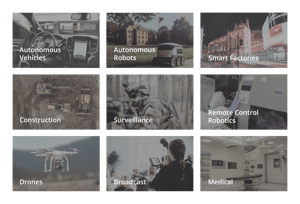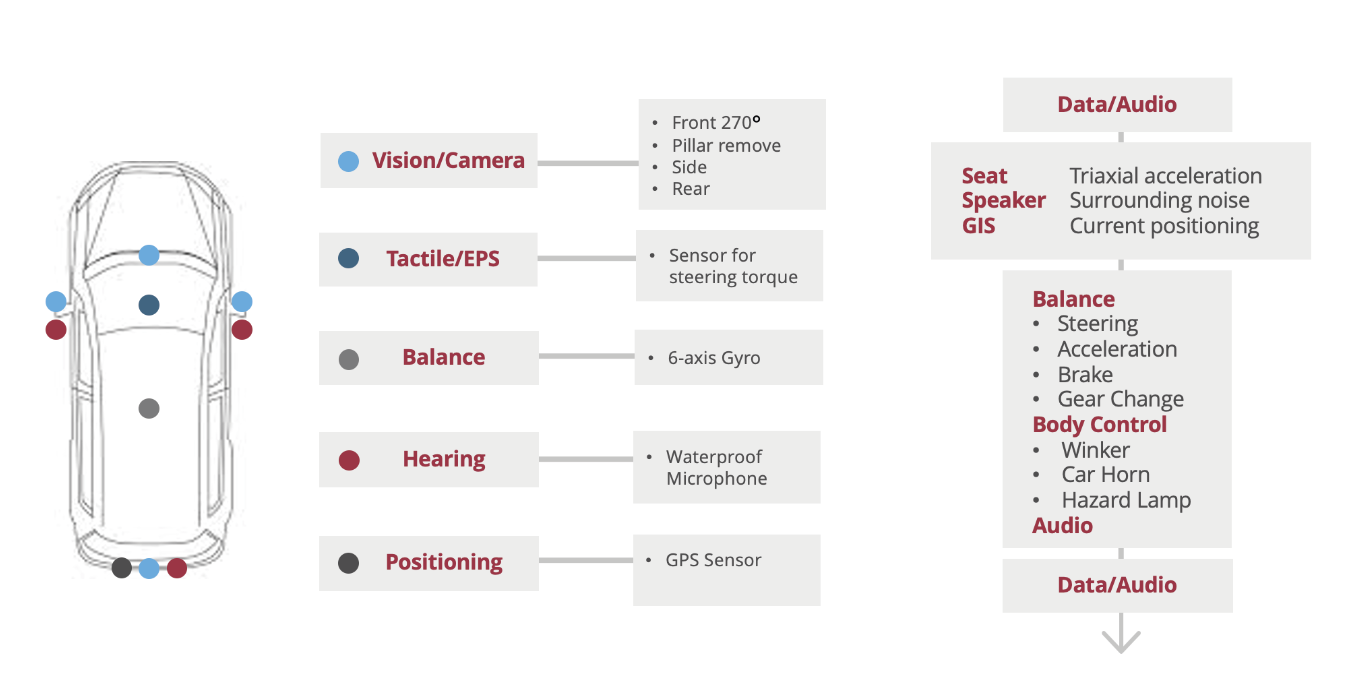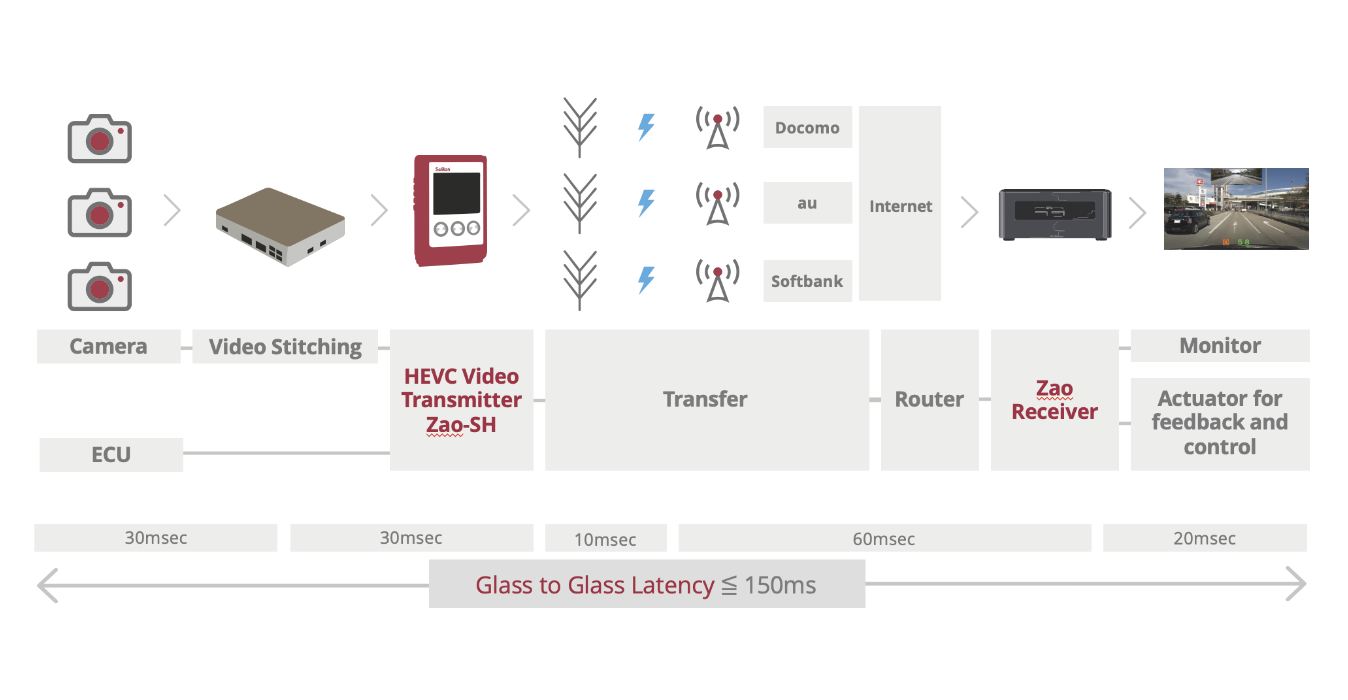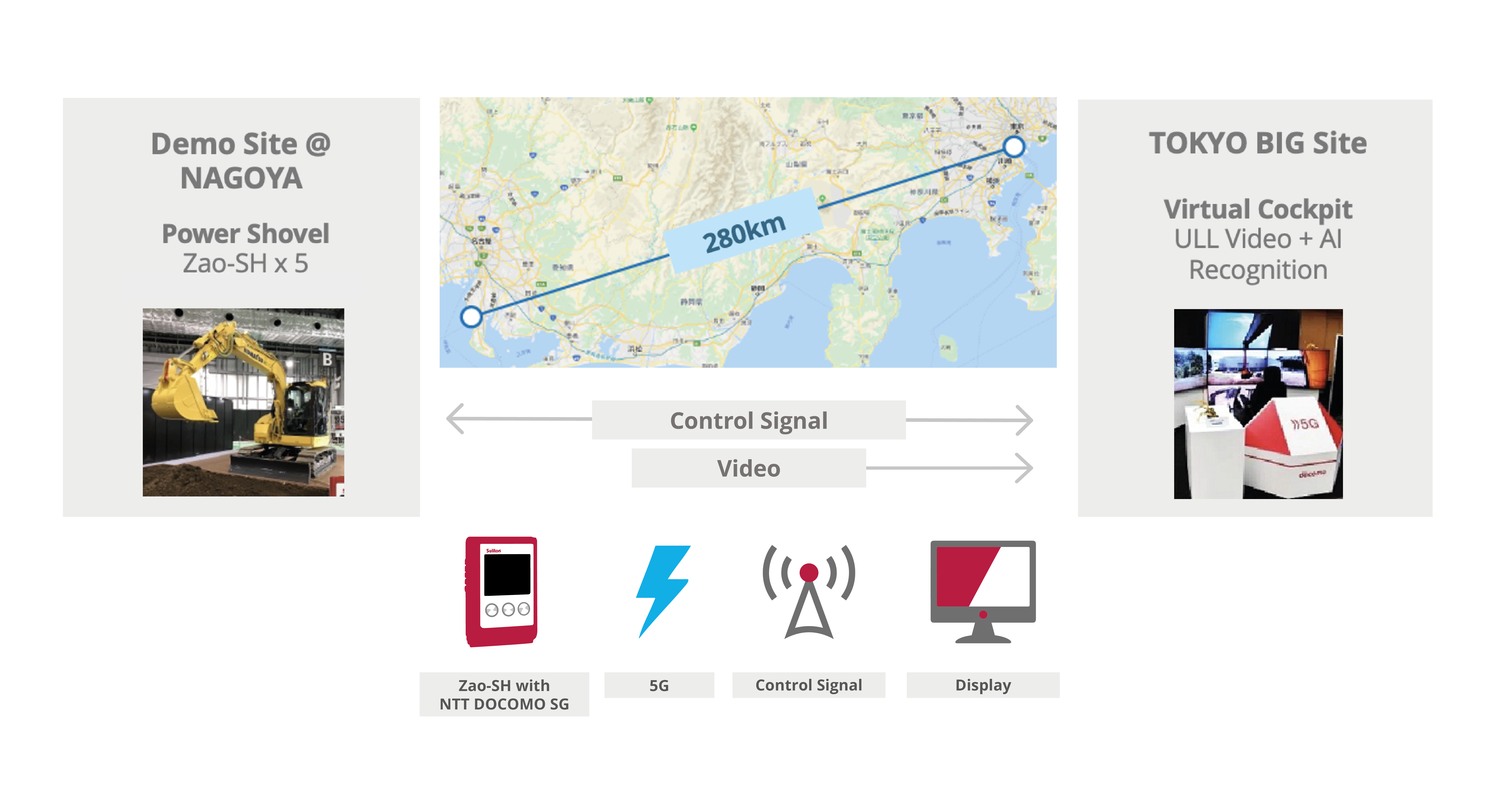With 5G we can now achieve encrypted live video streams with almost zero latency. This opens up a huge number of applications that were previously impossible.
The connectivity and control offered by ultra-low latency video results in safer and more efficient working across a whole range of industries.
Putting ultra-low latency video to use
Ultra-low latency video is capable of changing the world. Combine it with the speed of 5G networks and Soliton’s many years of experience, and the potential applications are life changing.

Telerobotics is the remote operation of robots that can be controlled from a distance. It allows operations of robots in hazardous areas, inaccessible environments, or in places where it is not conducive for human life. Think of the Mars Rover!
Applications areas can include healthcare, maintenance, construction, mining, exploration, search, rescue and recovery operations.
Remote driving allows vehicles to be safely driven from a far-away location and is now possible with the Zao Ultra Low Latency Technology.
The Zao technology is a real-time video transmission system which enables safe remove driving. By providing a live feed from the remotely-controlled car, drivers can view and react to the road in real-time.
With its Ultra Low latency technology for real time live video transmission from the vehicle, complete with a return control signal back for driverless control that includes steering, braking, accelerating and signals, the device can utilise multiple 4G and 5G for almost zero delay driving from a remote location. Remote driving can have many applications, for defence and military applications to keep personnel out-of-harm’s-way, or as backup for autonomous driving should a failure occur and normal in-car driving cannot be achieved.
Soliton has also developed a method for “platooning” or joining up multiple cars and vehicles with the lead vehicle acting as the master vehicle with all the secondary vehicles following the directions of the first in the “car-train”.
-1.jpg?width=4585&height=5287&name=brock-wegner-pWGUMQSWBwI-unsplash%20(1)-1.jpg)

0.04 seconds latency - changing the game in live video transmission

The car can be driven from a remote location in a car simulator that is connected to view the road ahead via multiple cameras with almost zero latency.

Driving requires a real time view of the road, the remote driving showing the time delay between the driver and the remote driven car.

The new Ultra Low Latency technology brings a reform of working opportunities for remote bulldozer control, remote crane driving, remote agricultural vehicles and other remote heavy machinery operation. Enabling remote control of heavy machinery from anywhere in the world, it can bring a big improvement of working environments thus increasing the safety of the workers and decreasing the long-term costs of worker shortage or expecting them to work in highly hazardous areas.
Precise control of huge vehicles such as cranes is now possible from anywhere in the world. Just like remote driving, this requires the Zao-SH which is capable of video latency as low as 35ms across 4G and 5G networks. For instance, in February 2020, a power shovel operative in Tokyo was able to remotely control the machine from 280km away.
This ground-breaking technology also enhances safety in challenging situations such as environmental disasters. It allows machinery to be used effectively without endangering the lives of operatives.

The new Ultra Low Latency technology enables drones to live-stream allowing remote operators anywhere in the world to view action in absolute real time. Whether mounted in the drone for ‘beyond-line-of-sight’ applications or connected into the control-base station of the drone for ‘line of sight’ applications, the Zao technology can be used by professional drone operations to include defence, security, rescue and anti-terrorism applications securely and consistently. It is also possible to control the drone camera such as tilt, zoom and pan, remotely from the same control centre receiving the live stream via a return link on the same network.
When streaming video over public 4G and 5G networks, the Zao-SH can achieve latencies of less than 200ms, even when the drone disappears from sight. This makes it ideal for military use, law enforcement and border control.
The ability to gather information and supply essentials during environmental disasters is also where this technology shines. Storm tracking, construction projects and surveillance of mines are other common examples of where ultra-low latency video is being put to use.

Where cutting-edge technology meets mission-critical needs. Soliton Systems proudly introduces the revolutionary Zao-X hardware transmitter and Zao SDK, setting new standards in ultra-low latency video communication with remote control capabilities, over diverse wireless networks, including 4G LTE, 5G, Satellite, and WiFi.
Ideal for a Wide Range of Applications
From remote driving of all-terrain vehicles, drones, UAVs, tanks, to the control of robots deployed for mine clearance and other military applications, the Zao products are versatile solutions for video streaming and remote operations that are ultimately designed for OEM integration to keep soldiers out of harm's way while maximizing operational efficiency.

Many UAVs' (Unmanned Aerial Vehicle) and drone applications require the UAV to go beyond the line of sight but yet require live streams with incredible low latency for real time viewing. By utilising Solitons ground-breaking low latency units by live streaming over public 4G and 5G networks, the new Zao-SH, you can stream to a remote location in less than 200ms, even if the drone is out of sight. This can be used in a multitude of industries for remote piloting in such areas as defence, military, law enforcement, rescue and border control surveillance, gathering information or supplying essentials for environmental disasters, and storm tracking for forecasting hurricanes and tornadoes. In addition it is possible to remote-pilot UAV vehicles for use such as surveillance of pipelines, mines and construction projects.
Whether it is open-pit mining on the surface, or underground mining from within deep tunnels, the industry is dangerous with hundreds, perhaps thousands of miners dying or being injured every year. In many parts of the world from Sweden to China, from Australia to Chile many mining companies are undergoing a digital transformation exercise to implement 5G to improve the safety of their industry as well as making the industry more environmentally sustainable.
It is estimated that “Smart Mining” with 5G applications can potentially save up to 1,000 lives and prevent 44,000 injuries over the next decade. In addition, remote-controlled drilling that relies on live streaming, is faster than manual drilling, and can increase productivity by 60%.
Given the many advantages of automation and data collection in the mining industry, many mining companies are looking to implement their own private 5G network which is more effective to implement in such a physically challenging location.
